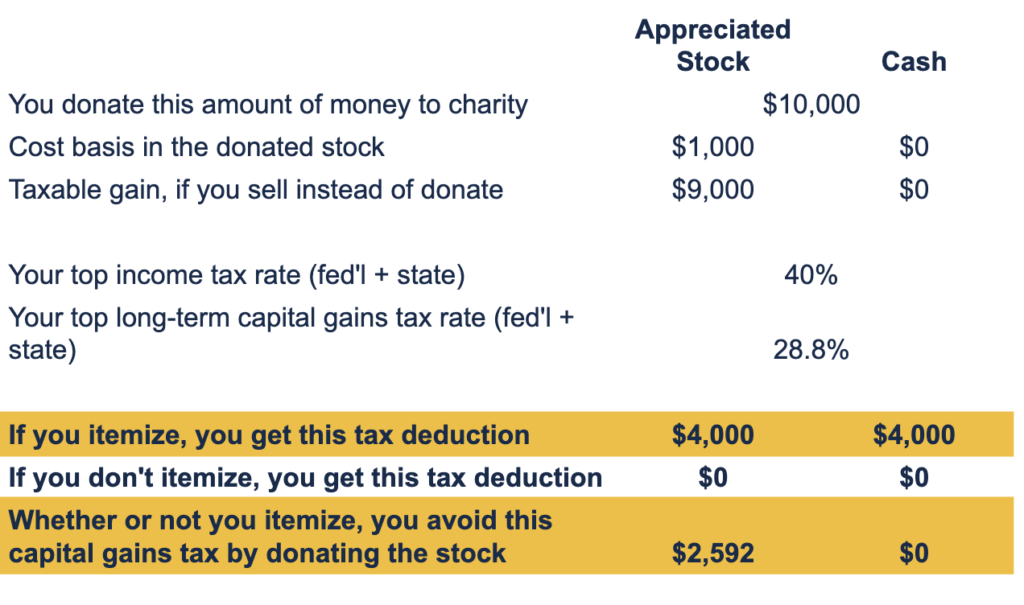
Are you tempted to believe that there are magical solutions to your financial problems?
The more overwhelmed you are by your financial situation, or the more you compare yourself to others and find yourself lacking, the more likely you are to believe that there exist tips and tricks that, were you only to know them!, would absolutely improve—maybe even vastly!—your financial situation.
The temptation of such magic is one reason you might hire a financial planner…or obsessively watch social media personal-finance grifters.
There Is No Magic in Personal Finance.
Dick Wagner, a long-time financial advisor and huge influence on the profession, is credited with saying (paraphrased) that these are the keys to success in personal finance:
- Spend less than you make.
- Save as much as you can.
- Don’t do anything stupid.
Snore. Sooooo not magical. But true. Oh, how true.
Following these rules will get you way way way further with your finances than spending any time looking for magical solutions.
You can succeed in your finances without any magic. You cannot succeed if you ignore those three rules (or, more accurately, if you succeed, it’ll be from luck, not effort or skill).
Except…It Kind of Feels Like There Is?
All that said, there are strategies and tactics that have always felt kinda magical to me. When I queried fellow financial planners, I got a bunch more ideas.
Of course, none of the “magic” I relate below can compare to what feels like the real magic of realizing (or helping someone realize) that you can start using your money to grow and live a life that is truly fulfilling and meaningful. But that’s a bit too woo-woo for this particular blog post.
I wanted to share some of these strategies and tactics with you because they are, at least in my professional opinion, fun and even sometimes exciting to implement. Sometimes they might even feel like (legal) cheating.
When we planners first discuss these ideas with our clients, their eyes often bug out, or they sputter something about “What? That’s allowed?!”
Yes. These are all legitimate, and even common (among professional financial planners), ways to improve your financial situation. Keep in mind that I am not writing a How To manual here. If you are intrigued, please go learn more of the details or work with a good planner or CPA to actually implement.
Ultimately, there is no magic. Just an unusually deep understanding of how the tax code works.
Automating Tasks You Know You Should Do (The Ultimate “Nudge”)
One of the biggest, most over-arching pieces of magic you can create for yourself in your finances is the magic of automation.
Automate paying off your credit cards every month. Automate paying extra on your mortgage every month. Automate donating to charity. Automate saving to your 401(k) or IRA or taxable investment account or Emergency Fund.
There’s a good reason that the word “automagic” exists. [If you are interested by the idea of how to effectively “trick” yourself (or others) into doing the right thing, check out the book Nudge. I read the first edition through and was fascinated. The updated edition, I abandoned half-way through, but perhaps because I’d already read most of it.]
The magic: You take just a few minutes to set up some automation. Then you forget about it. Tune in a year later and WOW, Where did all that money come from?! How did my debt get so low?! How did I support my favorite causes so much?!
Donating to Charity with Extra Tax Benefits or Convenience
There is so much magic when it comes to donating to charity (above and beyond the true magic of helping people and causes who deserve to be helped).
Donate Stock Instead of Cash and “Double” the Tax Benefit
The easiest way to donate money is to simply put it on your credit card, or other forms of cash donation. You may or may not get tax benefits from donating that way. That’s okay. The main point of donating money is to support causes you care about, not tax savings, after all.
You will get a tax benefit only if you itemize your deductions (instead of claiming the standard deduction, which, ever since the Tax Cuts and Jobs Act passed in 2017, isn’t very likely).
If you don’t itemize, you get no tax benefits.
Enter donating stock. (More accurately, donating “appreciated securities,” i.e., investments owned in a taxable account that have grown in value since you bought them. “Stock” is simply the easiest and most common example, so I’ll use that.)
Let’s say you own 1000 shares of a stock. You bought it for $1/share (you spent $1000 to purchase it; this is your “cost basis”) years ago. Now it’s worth $10/share ($10,000 altogether). That’s a $9 gain per share. If you were to sell it, you’d pay taxes on that $9 gain.
Now let’s say you donate $10,000 to a charity. If you were to donate $10,000 in cash, you get tax benefits only if you itemize your deductions. If you itemize, you will also get those tax benefits from donating $10,000 worth of stock.
By donating stock, you will also get a second tax benefit: You don’t have to pay taxes on the $9000 of gains in that $10,000 of stock value. The charity still receives $10,000 of money (they never owe taxes), you might itemize, and you definitely avoid the taxes on the gain. Boom!

If it’s your company stock, you’re likely looking for ways to have less of it, without incurring a huge tax bill. This is a great strategy for doing that!
Or, if it’s a stock you actually want to own, you can still benefit! Let’s say you donate $10,000 of the desirable stock. You get all the above tax benefits. Then you can use the $10,000 of cash you would have otherwise donated to re-buy the stock.
Now, instead of having a cost basis of $1000 (meaning you’ll pay taxes on any gain above $1000 when you eventually sell), you’ll have a cost basis of $10,000 (meaning that you’ll pay taxes only on any gain above $10,000).
I started incorporating this “re-buy the stock” tactic into my own charitable giving strategy last year. (I’m taking a multi-year approach to building out a robust charitable giving strategy. It’s been very gratifying!)
The magic: You can lower your current tax bill in two different ways, not just one, and it can lower risk in your portfolio and/or lower the tax bill on your investments in the future!
Using a Donor-Advised Fund
If you’re in the tech industry, you likely already know about Donor Advised Funds. They’re sexaaaaay.
I used to poo poo DAFs much more than I do now. Now I think they can be quite wonderful (I opened one for myself and my husband in 2022 as a step in the evolution of our formal charitable giving plan), even though they are not panaceas and some DAFs are way better than others.
There are two main selling point, in my world, for DAFs:
- You can separate the tax-saving event (donating money to the DAF) from the philanthropic event (getting the money to a charity of your choice). You can donate to a DAF in one year and spend years figuring out where to direct the money, in fact.
This separation of tax event from philanthropic event is particularly handy when you have windfalls like IPOs, where, for one or two years, your income (and therefore your tax rate) is unusually high. It’s great to get a tax write-off (from donating to a DAF) in high tax-rate years! You can “rush” that donation without rushing the choice of charities.
For example, let’s say your company goes IPO in 2024. You have a huge income in 2024 and also in 2025 because lots of RSUs vest in each year. You make a DAF contribution in 2024 to get the tax write-off at your 37% (highest possible) federal income tax rate. But you don’t distribute money from your DAF to charities until 2027, and then again in 2030, and again in 2045. - It eases the administrative burden of donating stock instead of cash. Donating stock is usually more cumbersome than donating cash. If you use a DAF, you can donate stock only once (to the DAF) and then easily distribute cash to the 10 charities you care about, instead of trying to donate stock individually to each of 10 charities.
The magic: Your charitable donation can be So Much Easier while still maximizing the tax benefits.
Donating to Charity Directly from Your IRA (If You’re Older)
If you read my blog, you’re likely not in your 70s (wassup, Mom and Dad!). So, you won’t personally need this information for a long time. But maybe you can pass it on to your parents?
You probably have a traditional IRA (as opposed to a Roth IRA). Under current law, once you reach age 75, you’ll be required to take money out of it every year. This is called your Required Minimum Distribution (RMD).
Not only will you have to pay income tax on this money, it will drive up your total income amount, which in turn can drive up your Medicare Part B premiums and the amount of your Social Security income subject to income tax. Which makes for an even higher effective tax rate on all your income. (There are likely other indirect costs. I don’t specialize.)
If you are already donating money to charity, instead of donating cash out of your bank account, or maybe even instead of donating appreciated securities, you can donate your RMD directly to a charity. This is called a Qualified Charitable Distribution (QCD). (A CPA or retirement-focused planner should be able to determine which method of donating will save you more money overall.)
Donating your RMD via QCD (whee! acronyms!) means that the RMD money does not count as part of your income. So, not only do you not have to pay income tax on the money that comes out of your IRA, it also indirectly saves you money by reducing your Medicare Part B premium and lowering the amount of your Social Security income subject to income tax.
The magic: By donating money directly from your IRA, you not only eliminate taxes on that donated money, but it can lower your tax rate on several other sources of income.
Contributing to a Roth Account, With a High Income and In Large Amounts
Here are two strict rules about contributing to a Roth IRA:
- You can only contribute to a Roth IRA if you make under $153k/year (single) or $228k/year (joint).
- You can only contribute $7000/year ($8000 if you’re 50 or older). Reference
Except, of course, when you can legally break those rules.
Roth 401(k) Contributions
The simplest solution here is to have a 401(k) that allows you to contribute to a Roth account not just to a pre-tax account. Though there are income limits on eligibility to contribute to a Roth IRA, no such limits exist for Roth 401(k)s. Make $400k/year? You can still make Roth contributions to your 401(k) (assuming your plan allows it, and I’ve never seen a plan in the tech industry that doesn’t allow it).
The magic: Income limit on contributions? Ha!
“Backdoor” Roth Contributions
But you can even still contribute to a Roth IRA if your income is too high! It’s called a backdoor Roth IRA contribution. The TLDR is:
- You make a contribution to your traditional IRA
- You don’t take a tax deduction for that money (making it after-tax money)
- Then you convert that money from your traditional IRA to your Roth IRA.
- The sticky wicket here is that you can’t have any other pre-tax money in your traditional IRA. Oh, and also, the requisite tax form filing.
The magic: Income limit on contributions? (Smaller) Ha!
“Mega” Backdoor Roth Contributions
If you’re lucky enough to have a 401(k) that offers after-tax contributions (and additionally lucky to be able to save even more than the $23,000 you can contribute pre-tax or Roth), then you can make a “mega” backdoor Roth contribution.
When I first wrote this blog post about after-tax contributions in 2018, they were a rare and beautiful creature. Since then, it seems like every major tech company has started offering them. And it’s great.
With mega backdoor Roth contributions, a total of $69,000 can be put into your 401(k) in 2024, between your payroll deferrals (that $23,000), company match, other company contributions (rare, in my experience), and your after-tax contributions. $69,000 is a sight larger than the $23,000 we usually think about!
The magic: So. Much. Money. that is forever more tax-free.
Tangential: Discovering “Basis” in a Traditional IRA
Any contributions to a traditional IRA for which you haven’t gotten a tax deduction are considered “basis” in that IRA. This can help you in two ways:
- If you roll the money into a Roth account, it won’t be taxed.
- If you withdraw the money from the traditional IRA, it won’t be taxed.
(Note that this is complicated by the fact that you can’t withdraw or rollover only the after-tax dollars, leaving the pre-tax dollars behind. It’s always pro-rated across the entire IRA balance.)
The kicker, though, is that many people have basis in their traditional IRAs without knowing it. As one planner reported, she loves the “magic” of looking at a few years of a client’s tax return and “discovering” basis in the IRA (non-deductible contributions should be recorded in a tax return), which will help lower the client’s tax bill in the future. Often this basis comes as a complete, and happy, surprise to the client!
The magic: Oooh! Surprise tax-free money!
Getting Free or Low Cost Health Insurance
Having just gone through open enrollment on the ACA marketplace and having the honor of paying over $20k/year in premiums for a high-deductible (truly high deductible) plan for my family of four, the idea of “free or low-cost health insurance” gets my attention…and makes me want to cry.
(Side note: “Affordable Care Act,” my butt.)
During Low-Income Years (Sabbatical, Laid Off, Starting a Business)
There are many reasons, some good some bad, why your household income might plummet in a particular year. Some of our clients have taken sabbaticals. Some have been laid off and taken a while to return to a job. Some have started a business (and taken a few years to ramp up their income).
If you don’t have another source of health insurance (a partner’s health insurance, COBRA), then the “magic” here is Medicaid. Seriously.
Medicaid is a state-specific program, so I cannot personally attest to experiences in anything other than Washington state. But many states allow you to use Medicaid if your income is low enough, completely ignoring wealth.
When I started Flow, and my husband quit his job to become the stay-at-home parent, our household income dropped to $0, and we lost his employer health insurance. I tried to enroll in an ACA plan in Washington. The system led me inexorably to Apple Health (Washington’s Medicaid) and enrolled me there.
It was perhaps the best health insurance experience I’d ever had. Free. Didn’t have to change doctors. And aside from the state’s website (which…ugh), was administratively so easy.
If you find yourself with no health insurance and no or low income, check out your state Medicaid program.
The magic: Straight up free health insurance and healthcare that, if you’re lucky like I was, is also administratively (comparatively) easy. Almost as if we’re not living in the USA!
Affordable Care Act Marketplace Premium Tax Credits
Even if you make too much money for Medicaid, you can still get “premium tax credits” for the plan you purchase in the ACA marketplace.
For example, in my case, we moved off of Medicaid within two years, but were paying only a few hundred dollars per month for insurance for four for a while, thanks to the premium credits we got.
One colleague reported getting a married couple he worked with a $20,000 tax credit, by managing their sources of income and also, of course, letting them know this was even a thing they could get.
The magic: Health insurance premiums that are low enough to feel humane.
If You’re Willing to Kill Off Your Parents. (I Jest!)
You need to know two things in order to appreciate this strategy:
- What cost basis is, and how it impacts your taxes. As already discussed above, when you buy a stock, the price you purchase it at is the cost basis. When you sell that stock, in a regular ol’ taxable investment account, and it has gained value (i.e., it is worth more than the cost basis), you will owe capital gains tax on that gain.
- When you die, your taxable investments, like that stock, get a “step up in basis,” meaning that the cost basis is set to whatever the current value of the stock is. Which means that whoever inherits that stock can sell it ASAP and pay $0 in taxes, because the cost basis is the same as the current value and there is no taxable gain.
So! What magic do we get if we combine these two facts?
- You own a highly appreciated investment, (i.e., it has gained in value a lot since you acquired it, and selling it would trigger a big tax bill). Let’s say it’s shares of stock.
- You give (as in, a legally binding gift) this stock to your (elderly) parents. They now own this stock outright. You have no more claim or control over it.
- You wait for them to die. You really need them to wait at least 12 months, but ideally not all that much longer.
- When they die, they leave that stock to you. The stock gets a step-up in basis upon their death, making their cost basis equal to the current value.
- You own the stock once again, but with no taxable gain this time. You could sell the stock and pay no taxes!
Please note: There are meaningful risks and complexities to such an arrangement. I’m just touching the surface. Also note that it doesn’t have to be your parents; it can be pretty much anyone you trust enough to leave the investment to you when they die.
The magic: You eliminate the taxable gain on investments you own.
Selling RSU Shares with Little to No Tax Impact
There is mighty confusion about how Restricted Stock Units work, especially the tax impact. When your RSUs vest, it is the vesting that creates a tax event for you. If $10,000 worth of RSUs vest, you owe ordinary income tax on $10,000, just as if you’d gotten a $10,000 cash bonus or if that was just a regular salary paycheck.
The knock-on effect of this is that if you sell your RSUs immediately after they vest, you will owe little to no taxes on that sale. Why? Because when you pay taxes on that $10,000, your cost basis in those shares of stock is set at $10,000. If you then sell the shares for $10,000, there is no gain above the cost basis, and therefore no tax is owed.
Often, you can’t sell the RSU shares immediately after they vest. You might have to wait a few days or weeks, by which time, the stock price has likely changed. If the price has gone down, you can sell the shares and not owe any taxes. If the price has gone up, then you’ll owe taxes on the gain from the price at which it vested, but most likely the gain is still pretty small, and therefore the tax impact will be small.
People who get RSUs often don’t realize how small the tax impact is when selling shares from RSUs. You don’t have to wait a year after the RSUs vest! This often leads folks to unnecessarily holding onto the stock way longer than they should, building a risky, big pile of their company stock.
The magic: Reduce risk in your portfolio and get more money to either live your current life or invest towards your future life…all with little to no tax bill!
Using Your Investments to Buy Stuff, Without Having to Sell Anything
A somewhat morbid term for this strategy is “Buy, Borrow, Die.” This moniker reveals that it’s often better suited to older folks who have a good reason to expect to die in not too many years. (Is it possible to discuss such strategies without feeling like a ghoul? ‘Cause I kinda am right now.)
Note, though, that we have helped several clients in their 30s and 40s use it reasonably and successfully.
Let’s say you want to buy a home and need a big down payment. You have the money in a taxable investment account. So, you could sell the investments and use that cash to buy your home. But if you sell those investments, you’ll:
- Have to pay taxes on the gains
- No longer give that money a chance to grow in the stock market
Instead, you can borrow against that portfolio, taking out what is called a “securities-backed loan.” Your investment account serves as the collateral for the loan.
Now you’ve bought got your down payment (or bought something else) and also:
- Avoided capital gains taxes
- Allowed your portfolio to continue to grow (hopefully) in the market
Of course, this tactic isn’t free. You have to pay interest on the loan, and that interest rate is variable. In low-interest-rate environments (ahhh, 2020), this is a less expensive approach, and in high-interest rate environments (boo, 2022!), this is a more expensive approach.
There are two major, direct risks of a securities-backed loan:
- The interest rate could rise a lot before you’re able to pay it off. If your interest rate rises to, say, 10%, it’s hard to argue that you could be earning more money by leaving your money invested and taking out the loan.
- The value of your portfolio could fall. This could not only make you wish you’d simply sold the investments when they were worth more, but the bank that has made the loan might force you to pay off part of the loan. The loan can become too large a percentage of the account value, and the bank requires that you reduce that percentage. This would likely force you to sell your investments at the perfectly wrong time in the market (i.e., “low,” not “high”).
How do you pay back this loan? Well, a common way is to die. (Simple!) Those investments get a step-up in basis (mentioned above), your estate can sell them without owing taxes, and it can pay back the loan. This is the “Buy, Borrow, Die.”
Our clients aren’t that old. So “Die” would come as a complete shock to our clients. For our clients, they sometimes pay it off from ongoing income (they earn far more than they spend and so have extra money each month or each quarter).
They might also be expecting a windfall in the near future. An IPO, an inheritance, or the sale of a home, for example. Let’s say you want to buy a new home, but you still own your first home. You can take a securities-backed loan as a “bridge loan,” to bridge the time from buying your second home until you sell your first home. When you sell your first home, you can pay off the securities-backed loan.
You might have heard of The Rich doing this sort of thing, and it is, in fact, available to Normal People!
The magic: Avoid taxes on your investments and let those investments grow…while still using that self-same money to pay for your life.
“HSAs, just in general”
This was perhaps my favorite response from a colleague (financial planner Michael Golosovker). Everyone is getting into some nerdy level of detail about their magical solution. And he just says, “HSAs, just in general.” Ha!
But he’s right: the idea that we can get a tax deduction now, invest the money so it can grow, tax free, and then we can take it out tax free in the future, after it’s grown…a “triple-tax advantage.” Feels like magic!
A Health Savings Account can be the best retirement savings account out there.
The magic: No taxes. Ever.
My colleagues had more suggestions of “magical” financial planning. I had to cut it off somewhere. As you perhaps noticed, almost all of the magic I list above has to do with taking advantage of the tax code. Which is why (oooh, let me get out my drum so I can beat it again) working with a tax-aware financial planner and definitely a good CPA can be so damn helpful, if not outright necessary, in today’s (stupidly) complicated financial landscape.
If you want a thinking partner to figure which of these tactics might be worthwhile for your situation, reach out and schedule a free consultation or send us an email.
Sign up for Flow’s twice-monthly blog email to stay on top of our blog posts and videos.
Disclaimer: This article is provided for educational, general information, and illustration purposes only. Nothing contained in the material constitutes tax advice, a recommendation for purchase or sale of any security, or investment advisory services. We encourage you to consult a financial planner, accountant, and/or legal counsel for advice specific to your situation. Reproduction of this material is prohibited without written permission from Flow Financial Planning, LLC, and all rights are reserved. Read the full Disclaimer.



